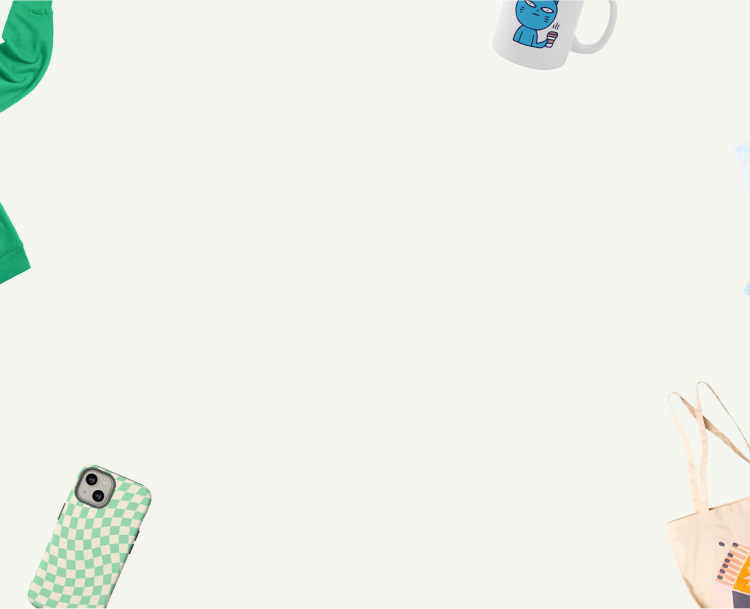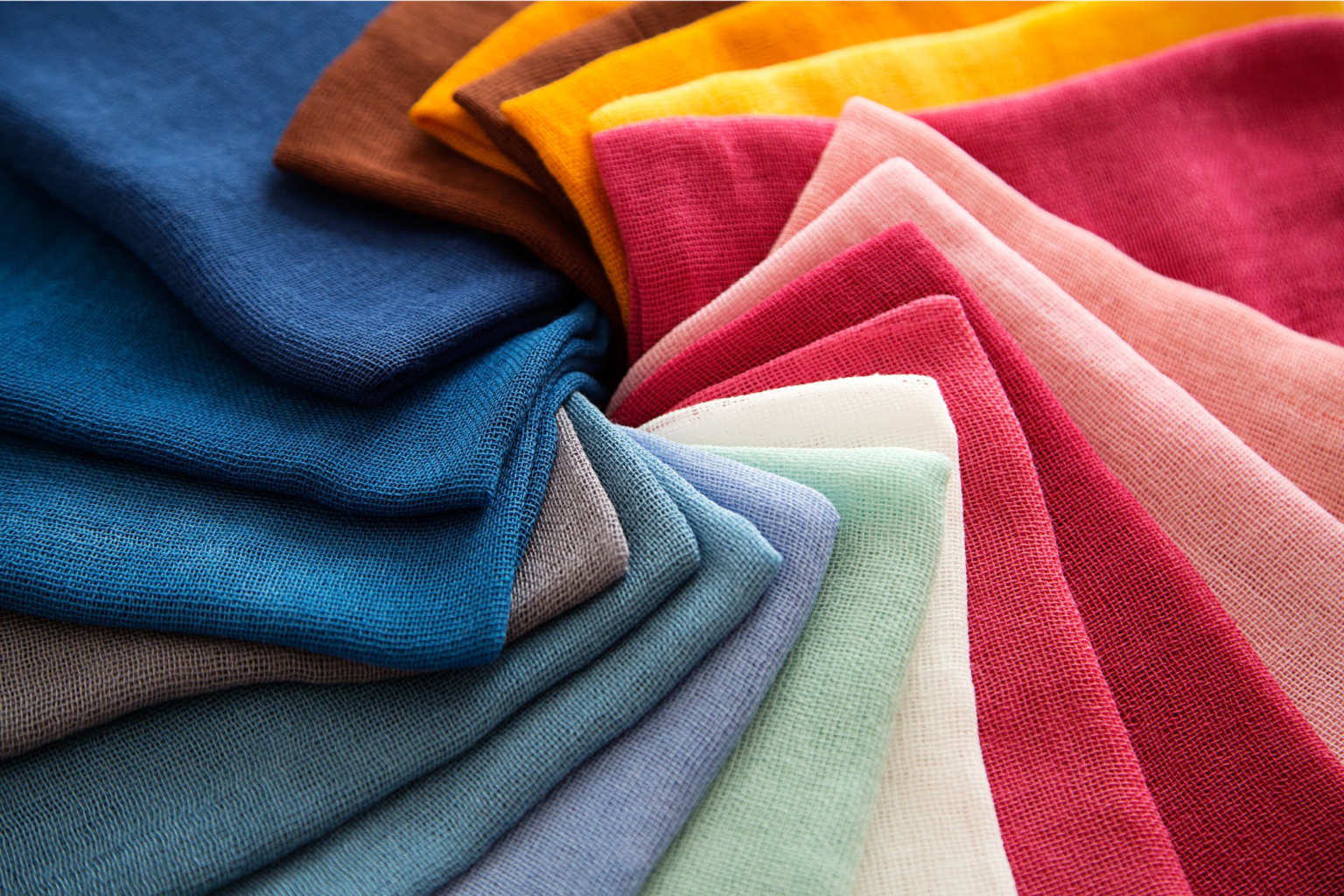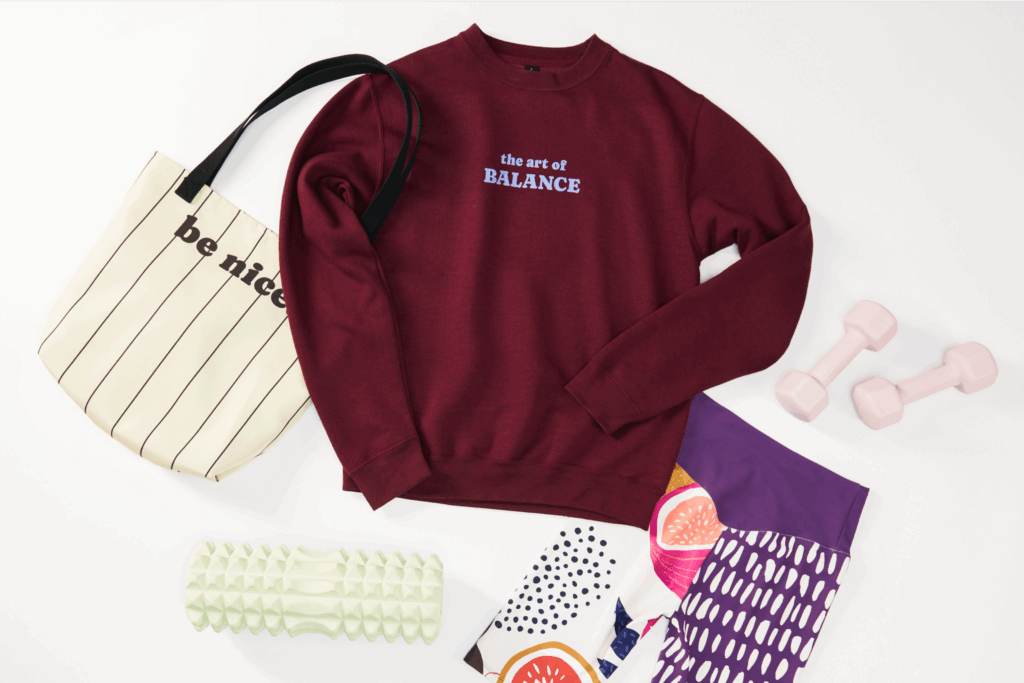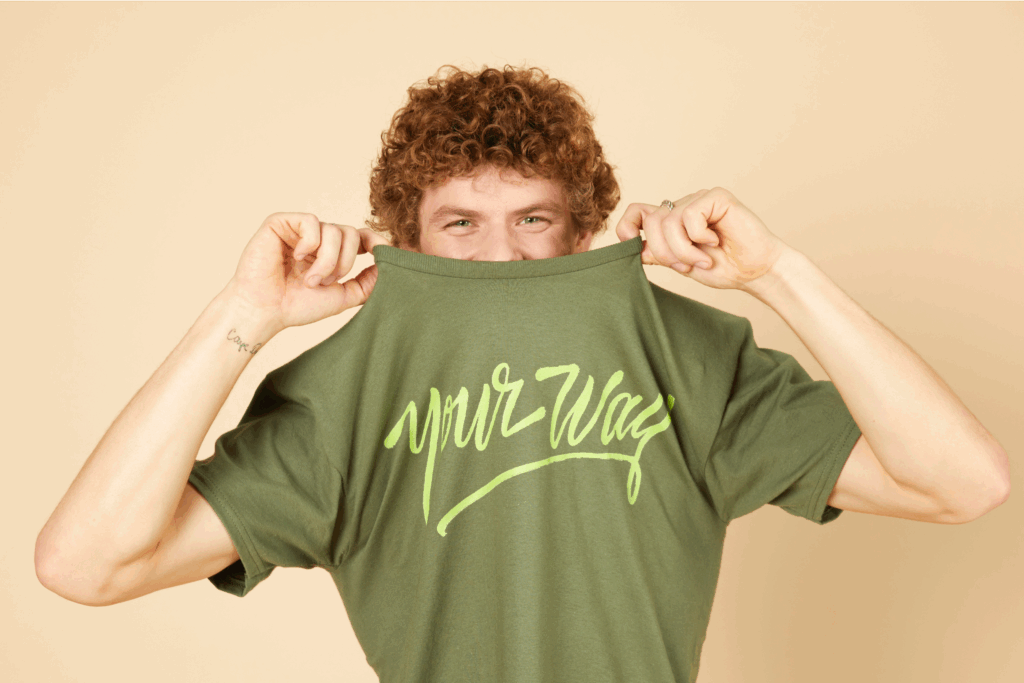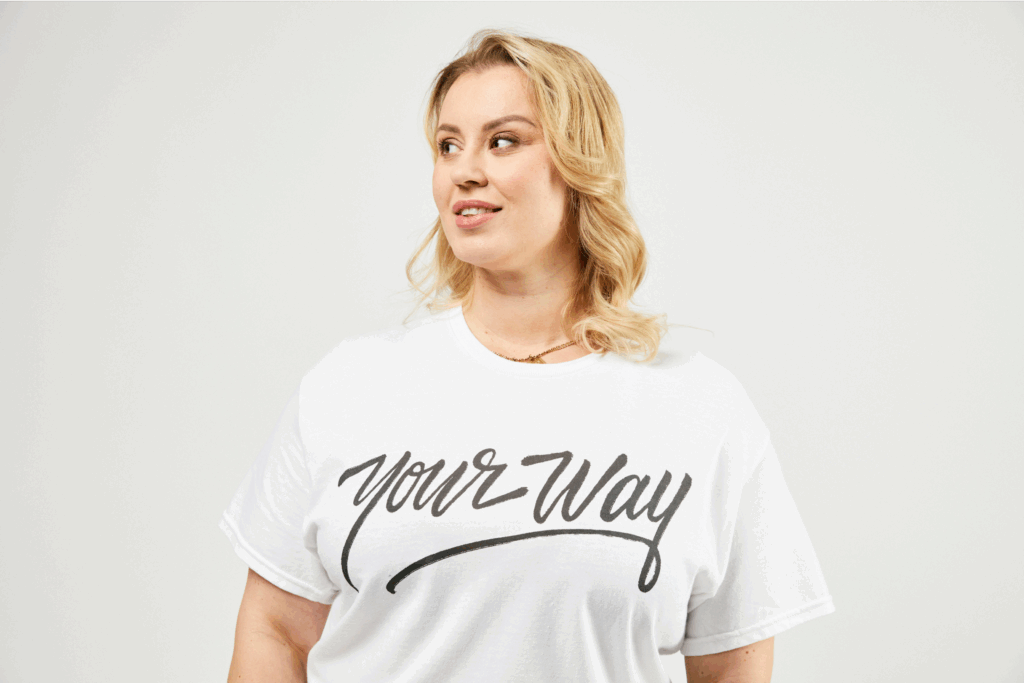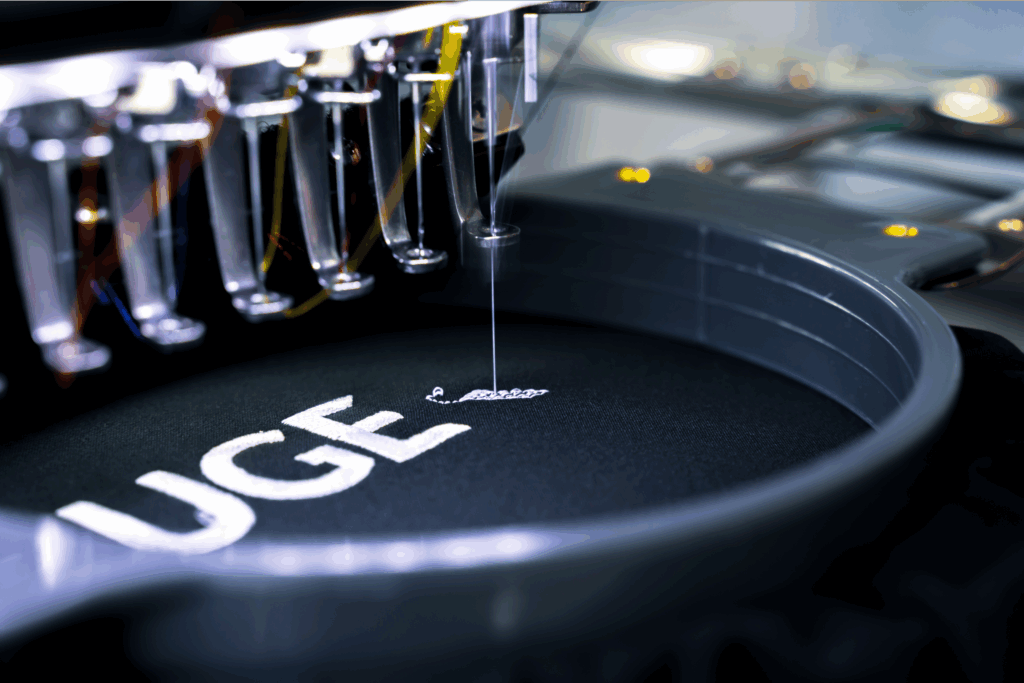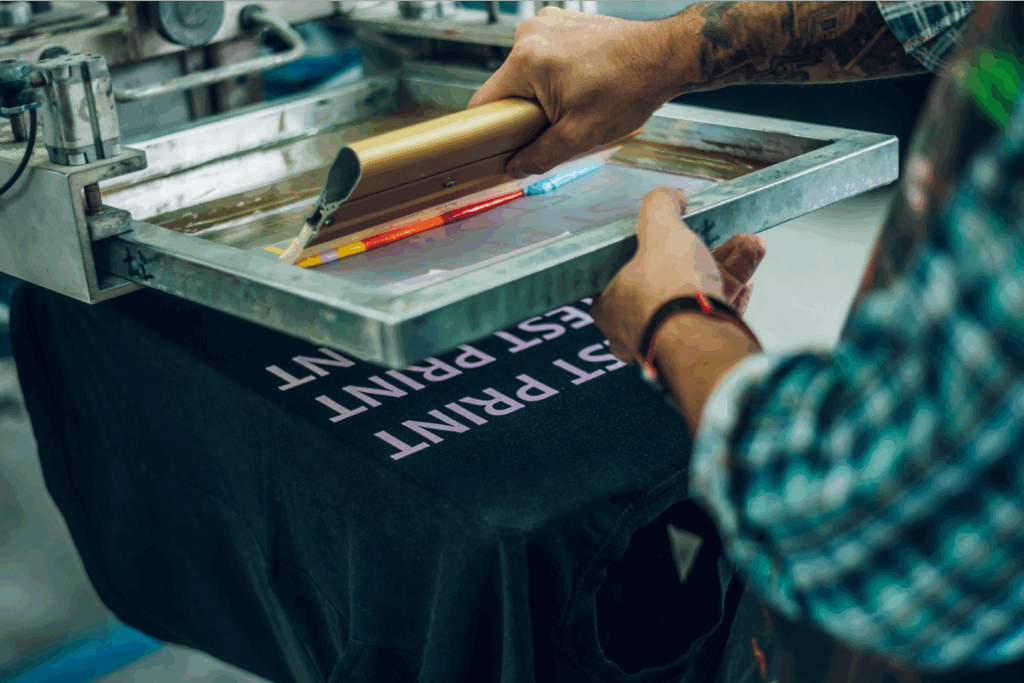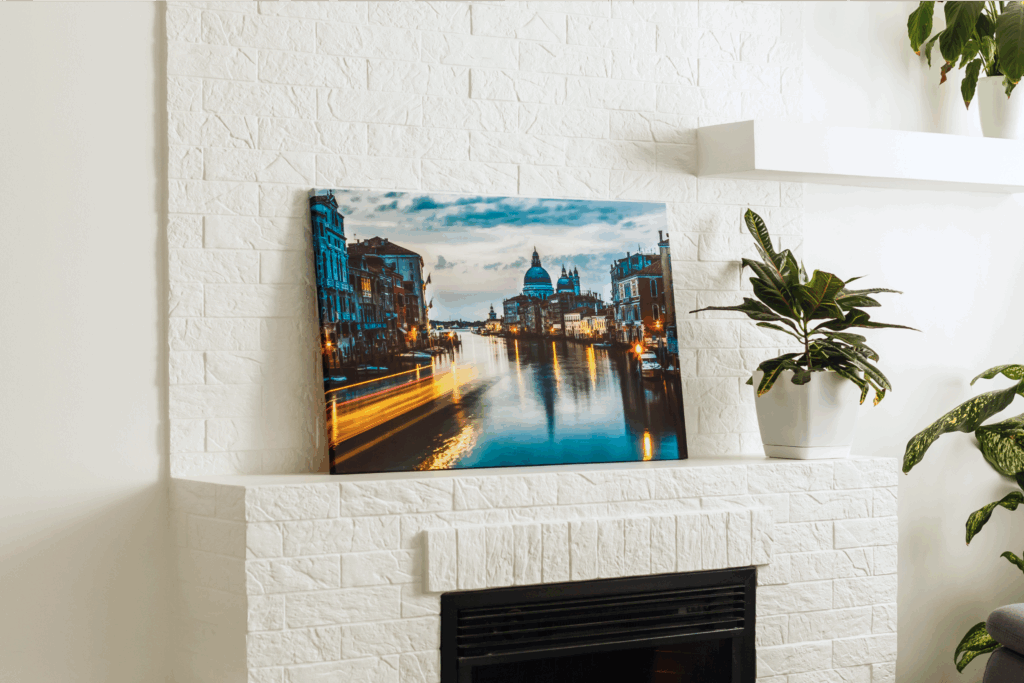Sell custom products with Printify
Whether you’re new to Print on Demand or a seasoned pro, understanding cotton and polyester fabrics is essential. The quality of materials directly affects your products’ durability, comfort, and lifespan, making fabric choice just as crucial as design.
In this guide, we’ll explore cotton, polyester, and cotton-polyester blends, their properties, and why certain fabrics are perfect for different apparel items. This knowledge will help you make informed choices, ensuring your t-shirt designs look and feel just as you want them to.
Key takeaways
- Fibers are the base materials spun into yarns that form fabrics, which inherit fiber properties like breathability, durability, and texture.
- Cotton is a natural material known for its softness, breathability, and hypoallergenic qualities.
- Polyester is a durable synthetic fiber that’s wrinkle-resistant and quick-drying, making it great for activewear and outdoor clothing.
- Cotton-polyester blends offer the best of both worlds: reduced shrinkage and wrinkles with improved moisture resistance.
- Printing compatibility: 100% cotton is best for DTG and DTF printing, while polyester-cotton blends work well for all-over printing.
Fiber and fabric: What’s the difference?
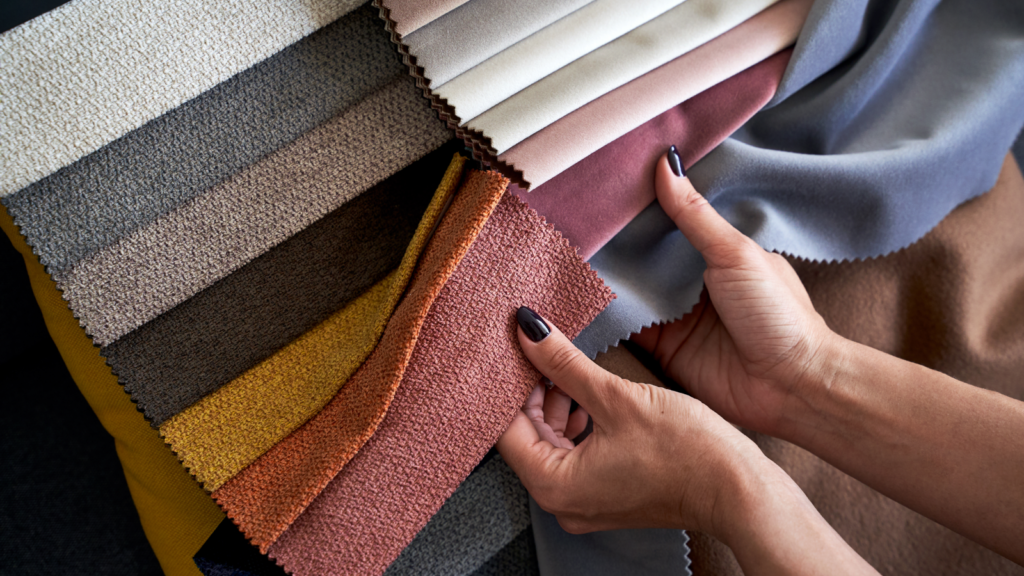
Think of fibers as the raw ingredients of fabrics, the tiny building blocks that create the materials we wear daily.
These fibers can be natural, like the soft, fluffy cotton from a cotton plant, or synthetic, like durable polyester derived from petroleum. That’s right – your gym shirt is likely made from the same material as your water bottle.
To create blended fabrics like polyester-cotton, these fibers are woven, knit, or bonded together. Just as mixing different ingredients in a recipe enhances flavors and textures, blending fibers produces fabrics with unique qualities tailored for specific uses.
Some polyester-cotton blends are perfect for cozy sweatshirts, while others excel in quick-drying activewear or offer wrinkle resistance for dress shirts.
Fabrics 101
Let’s explore the options for synthetic and natural fibers, along with the product types and printing techniques that work best for each.
Cotton fabrics
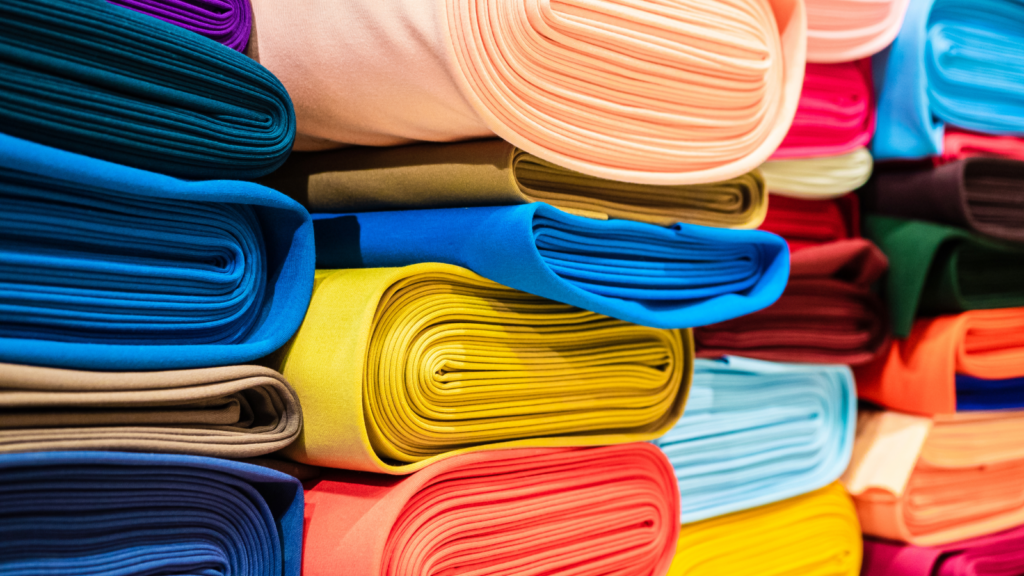
Cotton is a natural fiber celebrated for its softness, breathability, and popularity in apparel. Sourced from the cotton plant, cotton fabric is comfortable and absorbent, making it ideal for casual and summer wear, especially t-shirts.
Available in a variety of textures and weights, cotton is versatile but may wrinkle or shrink if not properly treated.
Types of cotton:
- Combed cotton. Soft and durable, as shorter fibers are removed.
- Organic cotton. Grown without pesticides, offering an eco-friendly option.
- Pima cotton. Extra-long fibers for enhanced durability and softness.
- Egyptian cotton. Highly luxurious with superior softness and strength.
- Upland cotton. The most commonly grown cotton in the US. A short-staple cotton that’s affordable but less soft.
- Acala cotton. High-quality, long-staple cotton primarily from California. It’s smoother and stronger than Upland cotton.
- Ringspun cotton. Twisted and thinned cotton strands make a finer, smoother, and more durable yarn.
| Pros | Cons |
|---|---|
| 100% cotton is soft, breathable, and hypoallergenic | Prone to shrinking and losing shape over time |
| Absorbs moisture well, making it perfect for t-shirts | Wrinkles easily |
| Biodegradable | May lose color after several washes |
| Durable (especially long-staple types) | Susceptible to stains |
Printing techniques
Cotton is popular for print-on-demand (POD) products, like t-shirts and hoodies.
Direct-to-garment (DTG) and direct-to-film (DTF) printing techniques work particularly well for vibrant, high-definition designs. DTG prints directly on the fabric for vivid colors and sharp details, while DTF provides durable prints that withstand repeated washing.
All-over printing isn’t ideal for 100% cotton fabric because the dyes penetrate the cotton fibers too deeply, leading to color bleeding and a duller look for the design.
Best for:
Cotton fabrics are best for casual wear – t-shirts, hoodies, and other everyday apparel. 100% cotton is also widely used in bed linens, tote bags, home textiles, and baby clothing because of its softness and breathability.
Cotton clothes are excellent for POD if you want to achieve detailed and vibrant prints. And with proper care, they’ll withstand hundreds of wash cycles.
Polyester fabrics
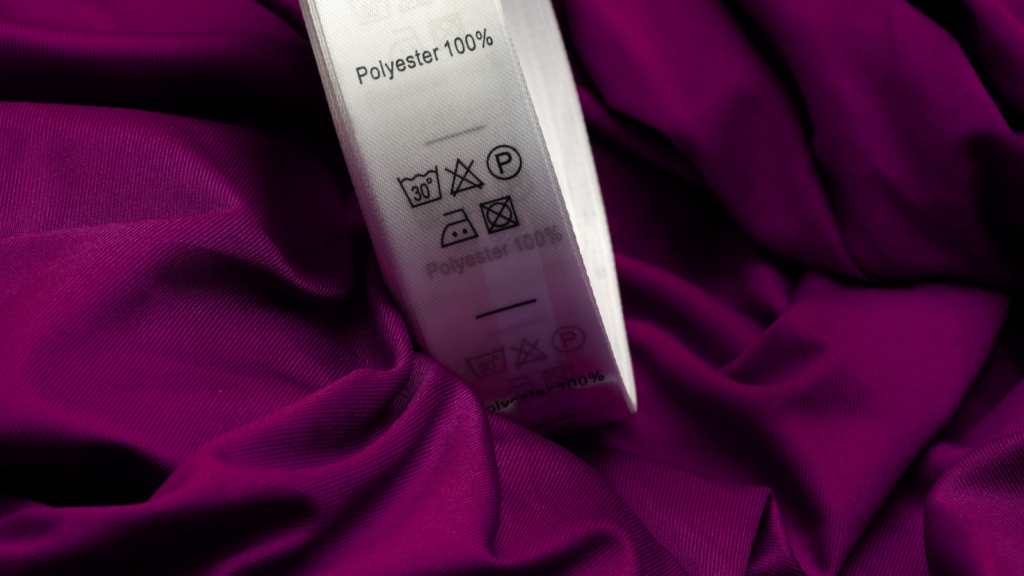
Polyester is a synthetic fiber made from petroleum-based products and is known for its durability, wrinkle resistance, and quick-drying capabilities.
Unlike 100% cotton, polyester is less prone to stains, shrinking, or stretching and retains its shape and color well.
This makes it a popular choice for sportswear, outdoor gear, and other performance apparel where quick drying and durability are essential.
| Pros | Cons |
|---|---|
| Highly durable and long-lasting | Less breathable than natural fibers |
| Resilient to wrinkles and maintains shape well | Can retain odors and may feel less comfortable against the skin |
| Dries faster than cotton | Less eco-friendly due to being petroleum-based |
| Doesn’t shrink or stretch | May pill over time with frequent washing |
Printing techniques
Polyester fabrics are perfect for sublimation or all-over printing because they bond with dyes at a molecular level, producing vibrant and long-lasting colors.
DTF printing is also suitable for polyester, offering versatility and strong adhesion to the fabric. However, polyester is not recommended for DTG, as the fabric doesn’t absorb ink as well as cotton, leading to dull prints.
Best for:
Polyester is ideal for sportswear, activewear, outdoor clothing, and uniforms due to its moisture-wicking, quick-drying properties, and overall durability.
It’s also a great choice for all-over designs, making it a go-to fabric for vibrant, full-coverage prints. Additionally, polyester is commonly used in home textiles like curtains, upholstery, and bedding for its easy maintenance and longevity.
Blended fabrics
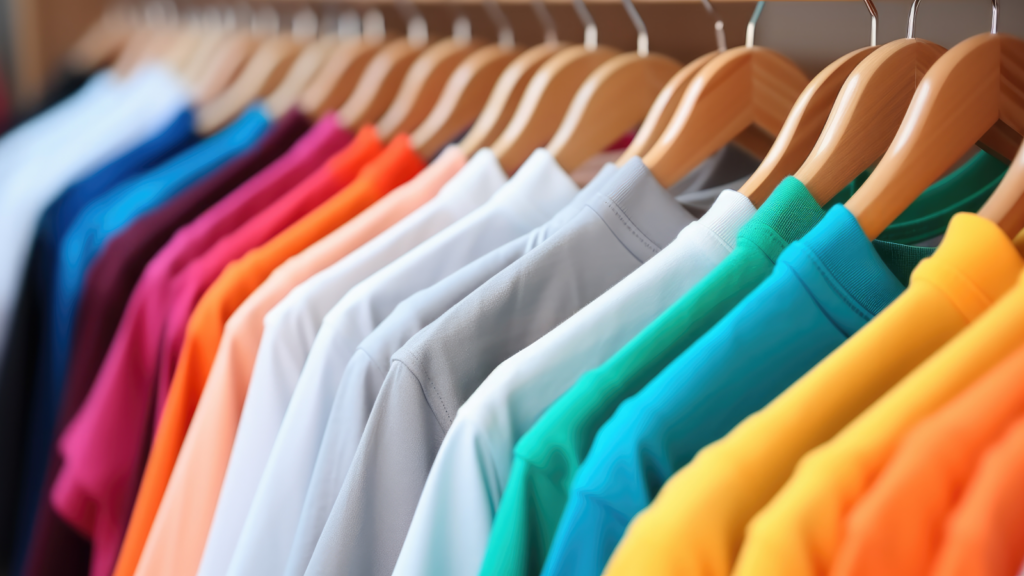
Blended fabrics combine natural fibers with synthetic ones, resulting in materials that have the best qualities of each. Cotton offers softness, breathability, and absorbency, while polyester enhances durability.
Cotton-polyester blends are comfortable and functional fabrics, suitable for a wide range of casual wear, sportswear, and work attire.
Blended fabric clothes balance comfort and longevity, minimizing issues like shrinking and wrinkles.
Popular blends:
- 65% cotton, 35% polyester. A popular cotton-poly fabric blend for t-shirts, offering softness and breathability with added durability and wrinkle resistance.
- 50% cotton, 50% polyester. Often used for sweatshirts and casual wear, striking a balance between comfort and functionality.
- 80% cotton, 20% polyester. This blended fabric is used in hoodies and high-end t-shirts, offering a more natural feel while retaining the resilience of polyester.
| Pros | Cons |
|---|---|
| Combines the comfort of cotton with the durability of polyester | Provides less breathability than pure cotton |
| Wrinkle and shrink-proof | May pill over time with wear and washing |
| Colors remain vibrant after multiple washes | Some blends may retain odors from polyester |
| Suitable for various printing methods like DTG, DTF, and AOP | Less eco-friendly due to synthetic fibers |
Printing techniques
Polyester-cotton blends are ideal for printing techniques like DTG and DTF, with certain blends also being suitable for all-over print. AOP calls for a high polyester content – 80% polyester fibers and 20% cotton.
Best for:
Blended fabrics are perfect for sportswear, t-shirts, casual clothing, and uniforms, where durability and comfort are essential. These fabrics are also ideal for creating poly-cotton blends for print-on-demand products, as they’re compatible with multiple printing methods and hold up well through countless wash cycles.
Pick a cotton, polyester, or blended product and start designing

Whether you prefer the natural feel of cotton, the durability of polyester, or the balance of blended fabrics, Printify has a wide variety of clothing options to fit your needs. Our extensive Catalog features items crafted from all three fabric types, perfect for creating custom apparel and accessories that suit your brand.
FAQ
This can be tricky, as polyester fibers resist shrinkage. To achieve some shrinkage, wash the garment in hot water and then dry it on high heat.
Keep in mind that blends with higher polyester content (like 65/35 and 80/20) will shrink less than blends with a higher cotton percentage.
The most popular cotton-polyester blends are 50/50 and 65/35 (cotton/polyester). Both provide a balance between cotton’s comfort and breathability and polyester’s durability and wrinkle resistance.
A 65/35 blend is often used for activewear because of its moisture-wicking properties, while 50/50 is preferred for comfort in everyday wear.
Dyeing a cotton-polyester blend requires specific dyes for each fiber. Cotton absorbs fiber-reactive dyes, while polyester needs disperse ones. You may need a two-step process: dye the cotton fibers first, followed by a separate treatment to color the polyester. Always follow the instructions on the dye product for best results.
If you only use cotton dyes in this blend, you’ll end up with a heathered, less intense color.
When ironing a polyester and cotton blend, set your iron to a low-to-medium heat setting, usually around 300°F (150°C), as polyester can melt at high temperatures. Always iron on the reverse side or use a pressing cloth to protect the fabric.
Yes, cotton-polyester blends offer several benefits. They combine the softer feel and breathability of cotton with the durability and wrinkle resistance of polyester.
These blends are often used in apparel because they’re comfortable, easy to care for, and retain their shape well after washing.
Disadvantages of cotton-polyester blends include less breathability than pure cotton and a higher tendency for static cling due to the polyester content. Additionally, these blends may not absorb moisture as well as 100% cotton, making them less ideal for very hot or humid conditions.
Yes, this cotton and polyester blend fabric is excellent for creating soft, breathable, and sturdy clothing. The higher cotton content offers softness and breathability, while polyester adds strength and wrinkle resistance, making it a popular choice for everyday clothing like t-shirts and activewear.
A 50/50 cotton-polyester blend offers a perfect balance between comfort and durability. It combines the softness of cotton with the durability and easy-care properties of polyester. It’s much easier to remove stains from such a blend than from a 100% cotton fabric.
Cotton fabrics are known for their natural feel, which makes them popular in casual wear, such as cotton polyester blend t-shirts. In contrast, polyester is smoother and more durable but lacks cotton’s soft texture.
However, advancements in modern fabric technology have made it possible to produce polyester cotton blends that mimic the feel of cotton, offering similar softness while maintaining the durability, wrinkle resistance, and quick-drying benefits of polyester.
100% cotton or a blended fabric? There’s a time and a place for them all!
Each material has its advantages and drawbacks, and neither will replace the other. Instead, by blending these fibers, they complement each other in many wonderful ways, achieving the perfect combination for every need.
So whether you’re designing a cozy, breathable hoodie or a quick-drying sports jersey, there’s a fabric out there that’s just right for your vision. Remember, the key is to understand the unique properties of each material and choose the one that best suits your project and your printing method.
